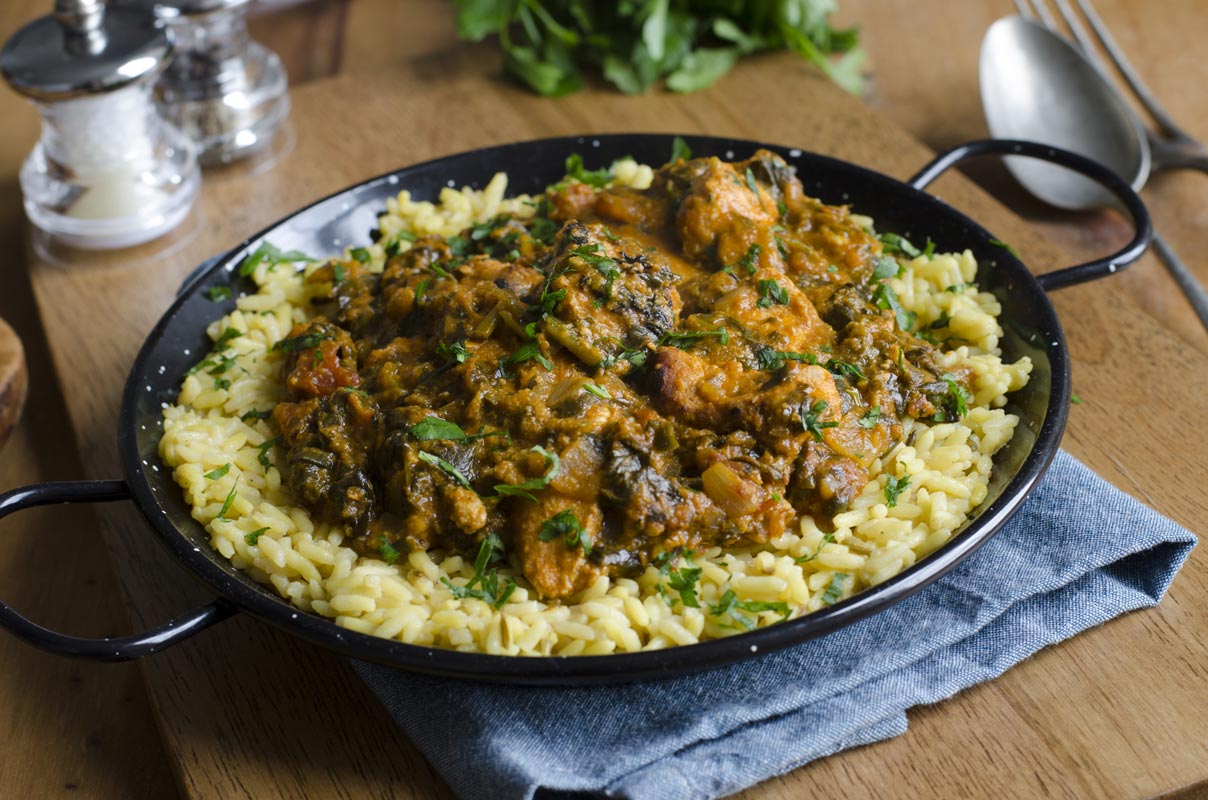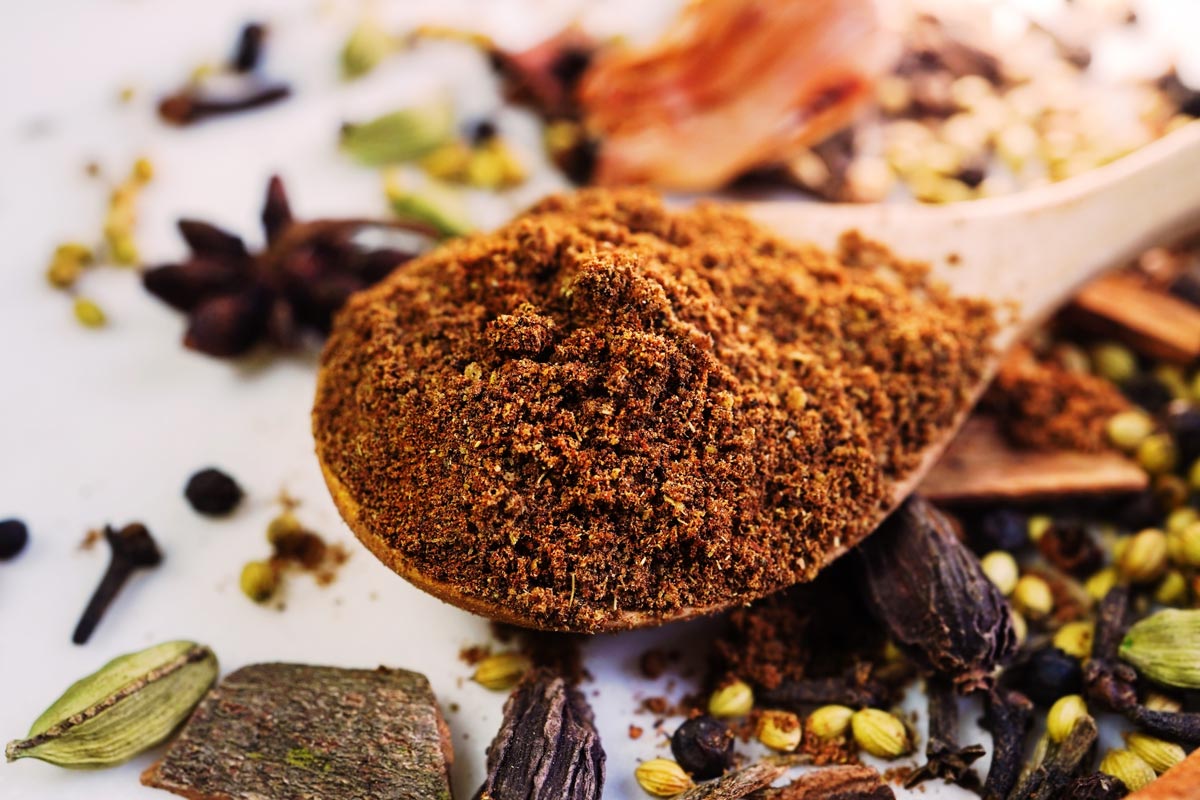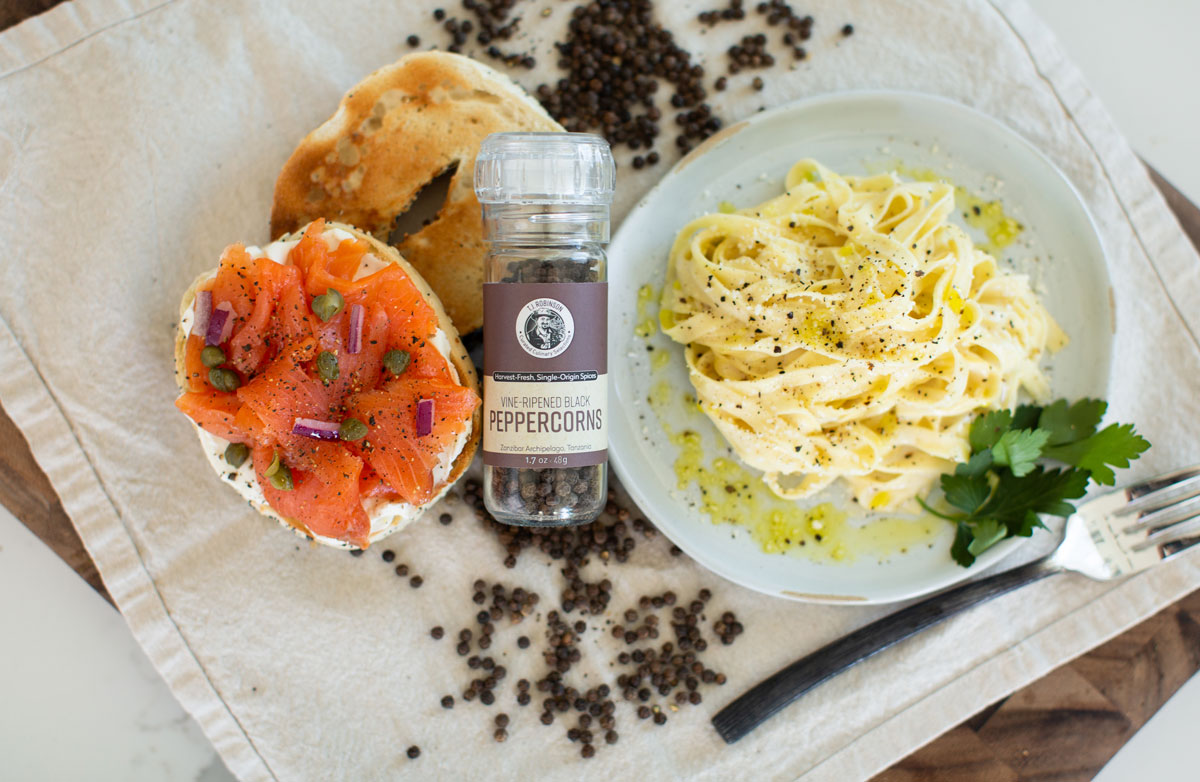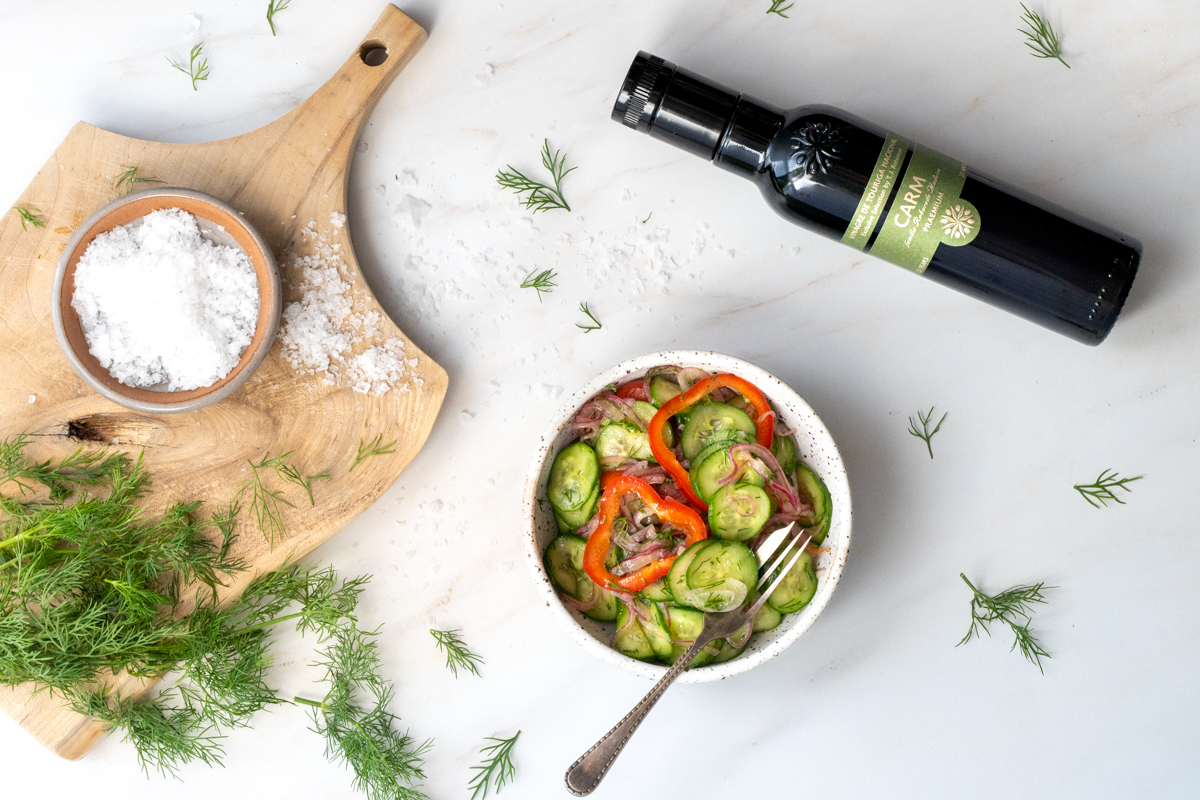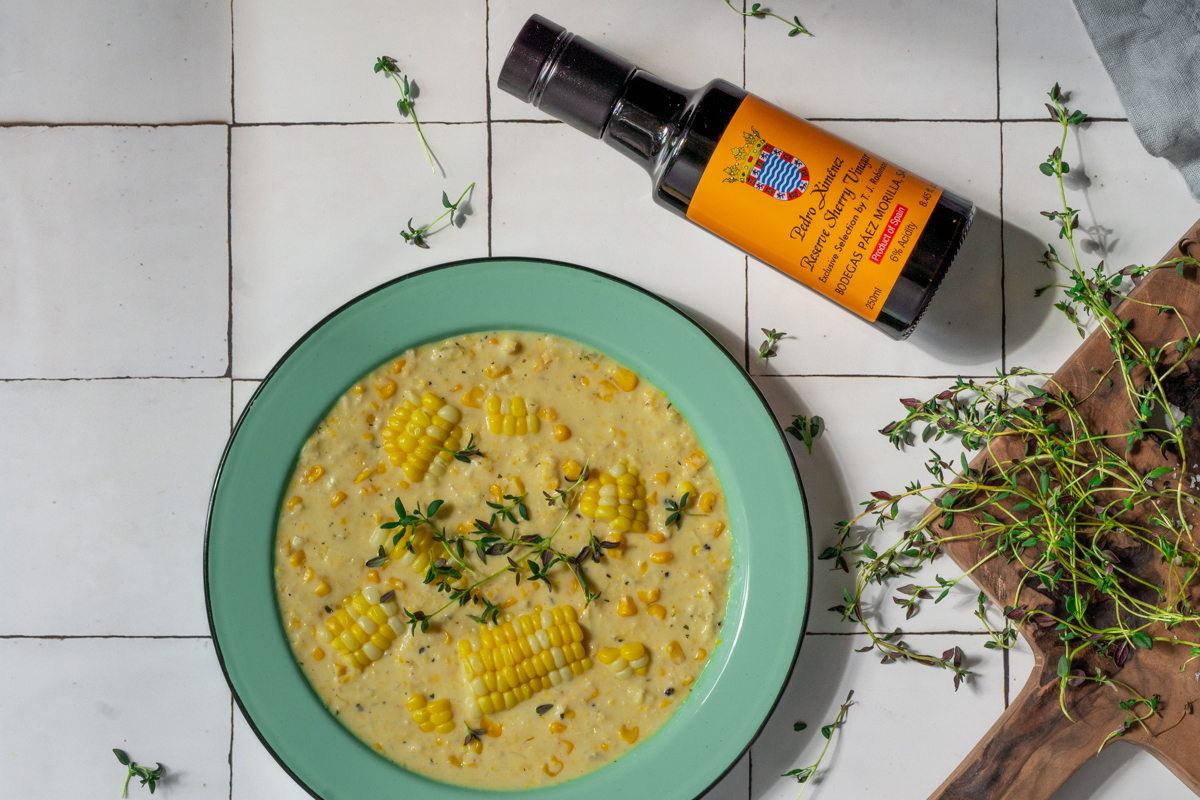Garlic-and-Pepper-Crusted Beef Tenderloin Recipe, Spotlight on Garlic, Testing Meat for Doneness, Mindfulness Can Help You Stick with a Special Diet and Even Sleeping is Better for You than Sitting
Looking for a festive holiday entrée? My Garlic-and-Pepper-Crusted Beef Tenderloin fits the bill for any celebration. Its two-step cooking method is virtually foolproof—it keeps the tender in tenderloin! I hope you’ll enjoy this sneak peek at my latest e-book, Savor the Season: Winter 2024, a collection of recipes featuring healthy and hearty seasonal dishes. Also in this edition of The Olive Oil Hunter Newsletter is information on how to use mindfulness to stick to a specialized diet and why even sleep is better for you than sitting.
Garlic-and-Pepper-Crusted Beef Tenderloin
 Garlic-and-Pepper-Crusted Beef Tenderloin
Garlic-and-Pepper-Crusted Beef TenderloinThere’s nothing more celebratory than a beef tenderloin, and because it takes on the intense flavors in the crust, there’s no need for further embellishment. The center cut is the most choice, tender, and lean part of the tenderloin.
Ingredients
- 8 cloves garlic, peeled
- 2 tablespoons coarse salt
- 1/3 cup extra virgin olive oil, plus 2 tablespoons for searing
- 1 tablespoon freshly and coarsely cracked black peppercorns
- 2 tablespoons fresh thyme leaves
- 1/4 cup fresh rosemary needles from a 3- or 4-inch sprig
- 2 tablespoons grainy mustard
- One 3-pound center-cut beef tenderloin, trimmed as needed
Directions
Step 1
Preheat your oven to 450ºF. In a small food processor, process the garlic and salt until the garlic is finely chopped. Add the 1/3 cup olive oil, black pepper, thyme, and rosemary, and process until the herbs are evenly chopped. Stir in the mustard and set aside.
Step 2
Heat a large cast-iron skillet or Dutch oven on the stovetop over medium-high heat. When hot, add the 2 tablespoons of olive oil and then the beef, searing it on all sides until nicely browned, 3 to 4 minutes per side, making quarter turns with tongs. Transfer the meat to a cutting board and let cool slightly.
Step 3
Coat the meat evenly on all sides with the reserved herb mixture. Transfer the tenderloin to a meat rack set in a roasting pan. Roast the tenderloin until the internal temperature reaches your desired doneness on an instant-read thermometer, about 20 to 30 minutes (depending on its thickness). Let it rest for at least 10 minutes before carving to prevent the juices from running out.
Yields 8 servings

Healthy Ingredient Spotlight
Garlic
Beyond adding wonderful flavor, garlic contains a powerful compound called allicin, released soon after the cloves are crushed or chopped—after you do your prep, wait 10 minutes before using the garlic to allow the allicin to develop. When I buy garlic, I always buy organic, and I always turn over the head to make sure there’s still some of the root network, a sign that it’s American grown. Beware of Chinese imports, bleached in chlorine to artificially enhance their appearance with a concave area on the bottom where the roots used to be.

Quick Kitchen Nugget
Testing Meat for Doneness
No matter what your preference for doneness, test with an instant-read thermometer inserted in the thickest part of the meat. Rare is 120º to 130ºF; medium rare, 130º to 135ºF; medium, 135º to 145ºF; medium well, 145º to 155ºF; and well, 165ºF. Keep in mind that when you take a roast out of the oven, it will continue to cook and can go up by another 5 degrees, so plan accordingly.

For Your Best Health
Mindfulness can Help You Stick with a Special Diet
A Brown Universitystudy, published in JAMA Network Open, found that participants in an eight-week mindfulness-based blood pressure reduction program improved health behaviors that lower blood pressure. “Participants in the program showed significant improvement in adherence to a heart-healthy diet, which is one of the biggest drivers of blood pressure, as well as significant improvements in self-awareness, which appears to influence healthy eating habits,” said lead study author Eric B. Loucks, PhD, an associate professor of medicine, epidemiology, and behavioral and social sciences, as well as director of the Mindfulness Center at Brown University.
Dr. Loucks said the study helps explain the mechanism by which a customized mindfulness training program adapted toward improving diet can affect blood pressure. “Improvements in our self-awareness, of how different foods make us feel, of how our body feels in general, as well as our thoughts, emotions, and physical sensations around eating healthy as well as unhealthy food, can influence people’s dietary choices,” he said.
High blood pressure, a major cause of cardiovascular disease, is the single most important risk factor for early death worldwide, according to a recent report by the World Health Organization, leading to an estimated 10.8 million avoidable deaths every year. The important thing to note about those avoidable deaths, Dr. Loucks said, is that there is ample research supporting effective strategies to control and prevent hypertension. “Almost everyone has the power to control blood pressure through changes in diet and physical activity, adherence to antihypertensive medications, minimizing alcohol intake, and monitoring stress reactivity,” he said.
The mindfulness-based blood pressure reduction program used in the study, which Dr. Loucks developed in 2014, trains participants in skills such as meditation, yoga, self-awareness, attention control, and emotion regulation. What makes the program unique, he said, is that participants learn how to direct those skills toward behaviors known to lower blood pressure. The researchers focused on participant adherence to the DASH (dietary approaches to stop hypertension) program, a balanced eating plan rich in fruits, vegetables, whole grains, and low-fat dairy intended to create a heart-healthy eating style for life. Despite its effectiveness, adherence to the DASH diet is typically low.
After six months, the mindfulness group showed a 0.34-point improvement in the DASH diet score. Loucks explained that this effect can be interpreted as a participant shifting from a vegetable intake approaching recommended levels (2-3 servings) to an intake at recommended levels (at least 4 servings), or making similar shifts across another component of the DASH score. The control group showed a -0.04-point change in the DASH diet score.
The trial results offer evidence that an adapted mindfulness training program for participants with high blood pressure that targets diet and self-awareness significantly improves both. “The program gives participants the tools to make heart-healthy diet changes that can lower their blood pressure and decrease their risk of cardiovascular disease,” Dr. Loucks said.

Fitness Flash
Even sleeping is better for you than sitting!
A new study, published in the European Heart Journal, is the first to assess how different movement patterns throughout the 24-hour day are linked to heart health. It is the first evidence to emerge from the international Prospective Physical Activity, Sitting and Sleep (ProPASS) consortium.
Researchers at University College London (UCL) in the UK analyzed data from six studies involving 15,246 people from five countries, each of whom used a wearable device on their thigh to measure their activity and had their heart health measured. The scientists identified a hierarchy of behaviors that make up a typical 24-hour day, with time spent doing moderate-vigorous activity providing the most benefit to heart health, followed by light activity, standing, and sleeping, compared with the adverse impact of being sedentary.
The team modeled what would happen if someone changed various amounts of one behavior for another each day for a week in order to estimate the effect on heart health for each scenario. When replacing sedentary behavior, as little as five minutes of moderate-vigorous activity had a noticeable effect on heart health.
First author of the study Joanna Blodgett, PhD, of the Institute of Sport Exercise and Health, Division of Surgery and Interventional Sciences at UCL, said, “The big takeaway from our research is that while small changes to how you move can have a positive effect on heart health, intensity of movement matters. The most beneficial change we observed was replacing sitting with moderate-to-vigorous activity, which could be a run, a brisk walk, or stair climbing—basically any activity that raises your heart rate and makes you breathe faster, even for a minute or two.”
The research found that, although time spent doing vigorous activity was the quickest way to improve heart health, there are ways to benefit no matter what your abilities—it’s just that the lower the intensity of the activity, the longer the time needed to start having a tangible benefit. Using a standing desk for a few hours a day instead of a sitting desk, for example, is a change over a relatively large amount of time but is also one that could be integrated into a working routine fairly easily, as it does not require any time commitment. Those who were least active were also found to benefit the most from changing from sedentary behaviors to more active ones.
James Leiper, MD, PhD, associate medical director at the British Heart Foundation, the organization supporting the research, said, “We already know that exercise can have real benefits for your cardiovascular health, and this encouraging research shows that small adjustments to your daily routine could lower your chances of having a heart attack or stroke. This study shows that replacing even a few minutes of sitting with a few minutes of moderate activity can improve your BMI, cholesterol, and waist size, and have many more physical benefits.
“Getting active isn’t always easy, and it’s important to make changes that you can stick to in the long term and that you enjoy—anything that gets your heart rate up can help. Incorporating ‘activity snacks’ such as walking while taking phone calls or setting an alarm to get up and do some star jumps every hour is a great way to start building activity into your day, to get you in the habit of living a healthy, active lifestyle,” Dr. Leiper continued.
Though the findings cannot infer causality between movement behaviors and cardiovascular outcomes, they contribute to a growing body of evidence linking moderate to vigorous physical activity over 24 hours with improved body fat metrics. Further long-term studies will be crucial to better understanding the associations between movement and cardiovascular outcomes.
Get More Recipes In Your Inbox!
